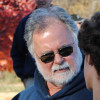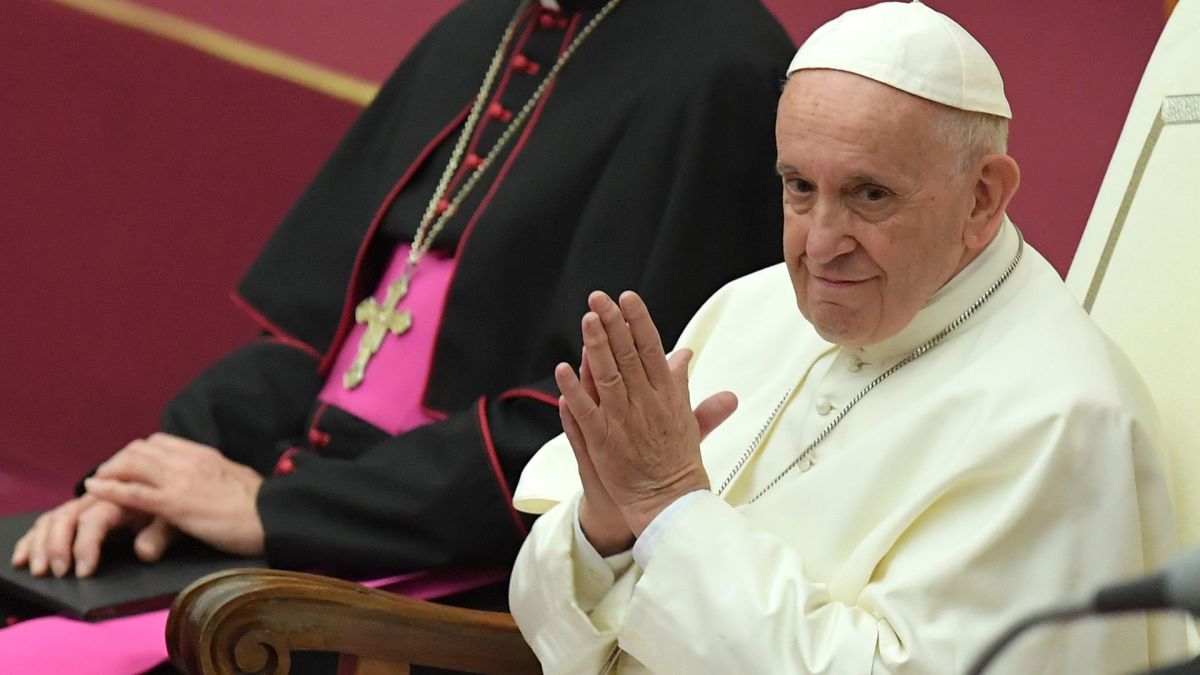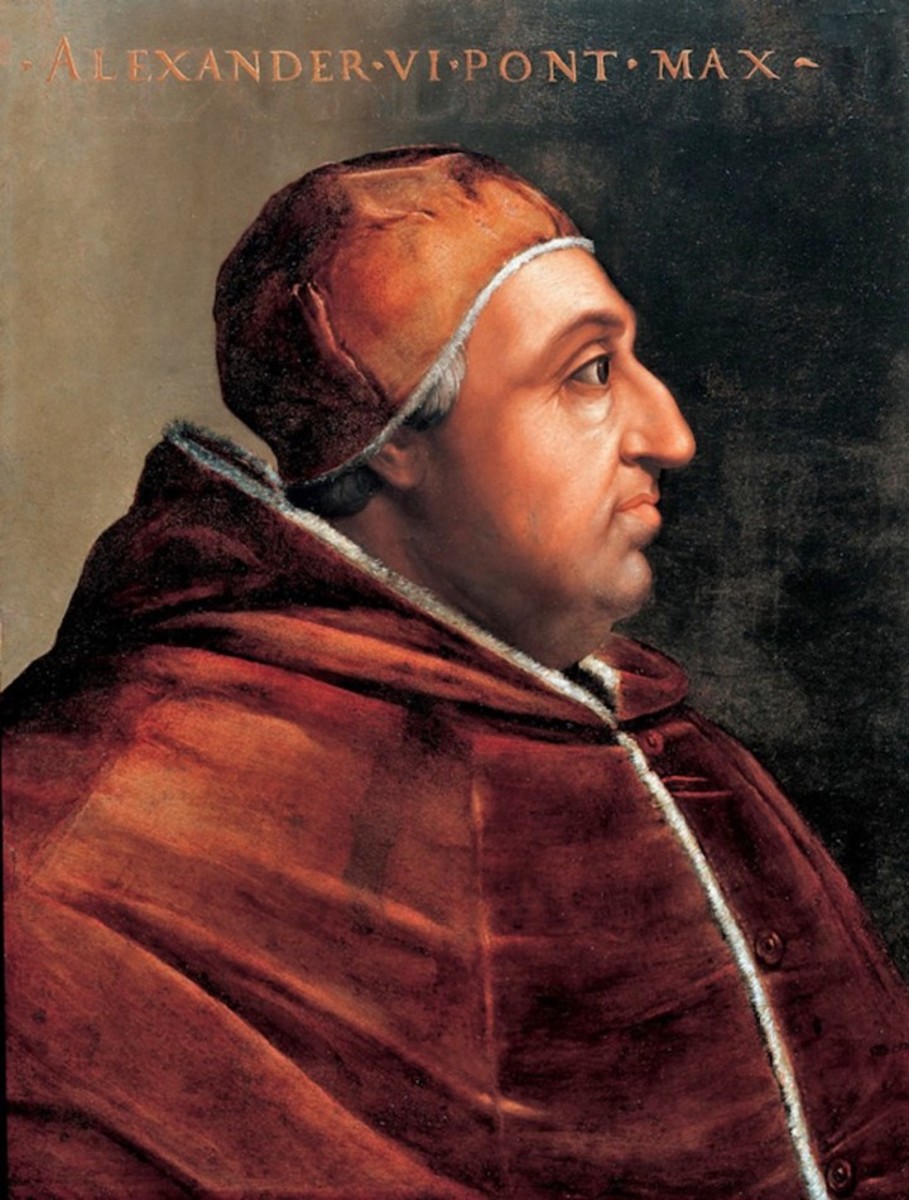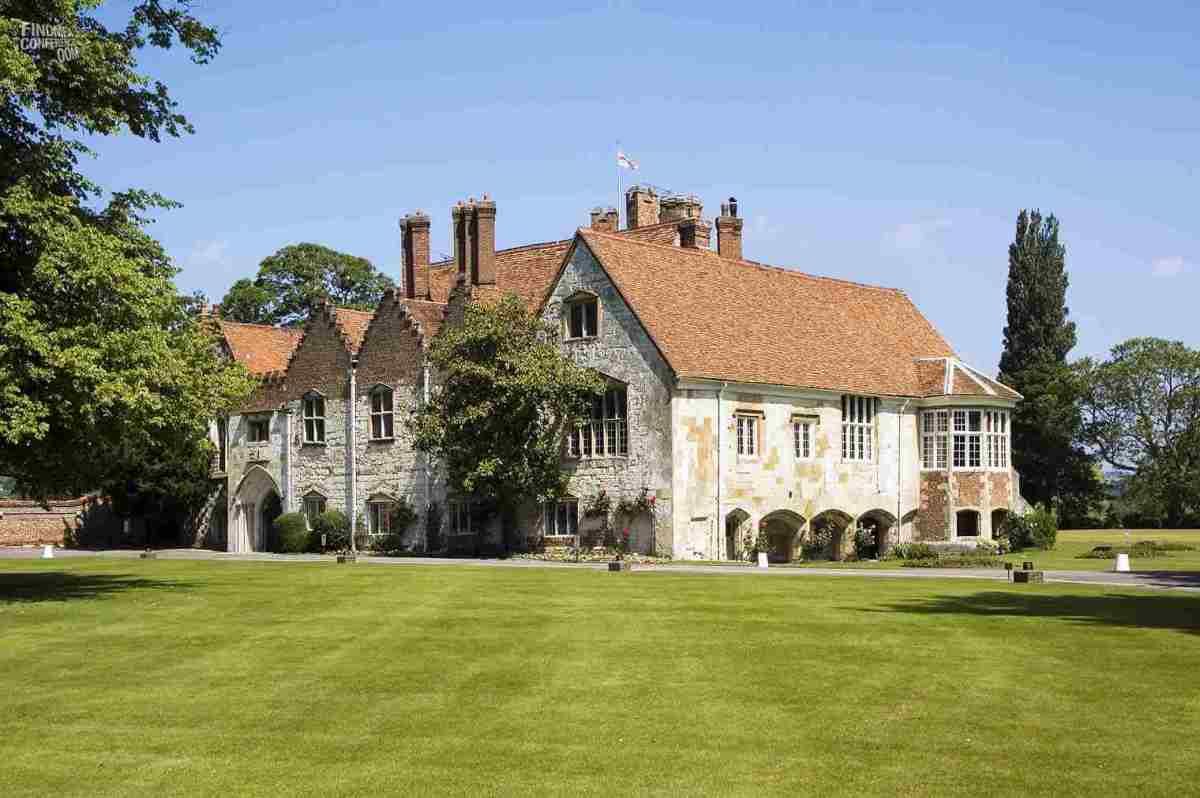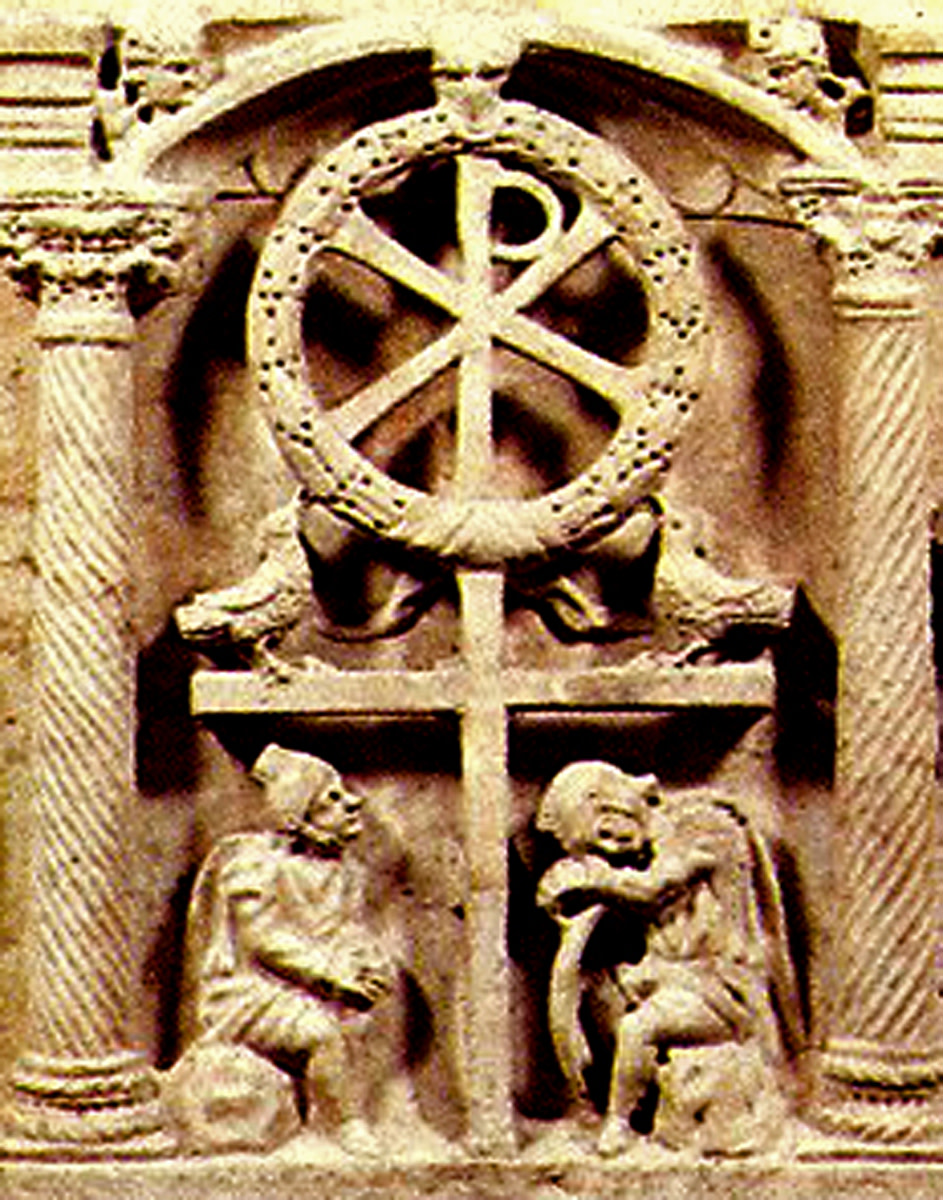Electing A Pope
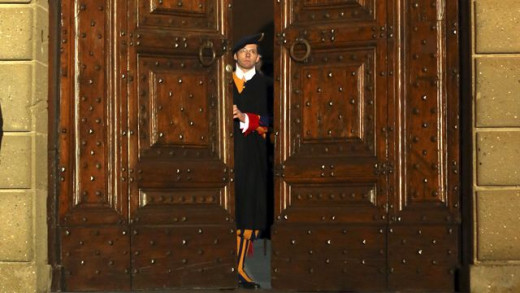
On February 10, 2013 Pope Benedict XVI made the surprise announcement he would renounce the ministry of the Bishop of Rome effective February 28, 2013. While the idea of the Pope resigning was not a complete surprise, Benedict had made clear in a 2010 interview he believed the Pope had the right, if not the duty, to step down if he was no longer physically or mentally in a position to lead the Church, a wave of shock and surprise quickly swept the globe. The last Pope to resign was Gregory XII in 1415. At the time of his resignation the printing press has yet to be invented (1454), Christopher Columbus had yet to be born (1451) and the peoples living in what would become North and South America had no idea what was on the horizon. It has been a long time since a Pope has resigned; however, an institution doesn't exist for two thousand years without having the ability to handle the occasional surprise now and again.
“Sede Vacante”
On the evening of February 28th at the stroke of 8:00 p.m. Swiss Guards closed the doors of Castel Gandolfo, in effect, closing the door on the papacy of Benedict XVI. The soldiers then returned to their barracks in the Vatican; they only guard the pope and Benedict’s security will now be in the hands of the Vatican police. The papal apartments in the Vatican had seals placed upon the door that will only be removed when the next pope enters. Two symbols of the papacy, the pope’s ring and papal seal will be made so they can no longer be used to seal documents. In a nod to technology, the pope’s twitter account will remain inactive until, if and when, the new pope decides he wants to use it.
Conclave as we know it is 738 years old and the rules have been modified over the years as times have changed. The most recent modification was made by Benedict XVI when he altered the timing of the conclave. Now the conclave can begin as soon as all of the voting cardinals have arrived and, regardless of the status of the electors, it must begin within twenty days of the papacy becoming vacant. He also reaffirmed the secrecy of the election by extending the Oath of Secrecy to anyone involved in the process, including technicians responsible for assuring there are no monitoring devices of any type installed anywhere the acts of election are carried out, including the Sistine Chapel itself.
When Benedict made his announcement cardinals began making the trip to Rome. All told there are 207 members of the College of Cardinals, 75 of whom normally live in Rome; since 1970 only those cardinals under the age of 80 at the time of conclave may participate, at this time that number is 117. The time for the conclave will be decided possibly as early as March 4th when the cardinals begin meeting in general congregation.
When the Swiss Guards closed the doors at Castel Gandolfo authority in the Church transferred from the former Pope to the College of Cardinals and specifically to the Camerlengo, Cardinal Bertone, who became the acting head of state. During this time the power of government is extremely limited, merely allowing Church institutions to operate at a base level and not making any definitive decisions or appointments that would normally be reserved for a pope or someone delegated by him. In this instance Cardinal Bertone does not have the responsibility of a papal funeral, so most of his attention will be turned to the conclave.
The Dean of the College of Cardinals presides over the cardinals but he holds no power of governance over them. His responsibility is to summon the conclave and then preside over it, unless he is too old to vote in the papal election. He becomes the public face of the Vatican and is responsible for announcing the death of the Pope to the diplomatic corps and the heads of other nations. In this case Cardinal Sodano< the Dean, is too old, as is the vice-dean. His duties inside the conclave will be assumed by the senior Cardinal-Bishop, Giovanni Re, and Re will be the one who asks the Pope-elect if he accepts the papacy and, if he does, by what name he wishes to be known. Unless, of course, Cardinal Re himself is elevated to pope as Cardinal Ratzinger was when he became Pope Benedict XVI.
As soon as the cardinals begin their general congregation meetings the Sistine Chapel will be closed to the public and preparations will begin to accommodate the cardinals for a period of time that could stretch anywhere from a day or two to possibly weeks. One of the purposes of the Congregation of Cardinals is to discuss the current state of the Church and to suggest the qualities necessary for the new pope to possess at that specific time in history.
On the opening day of conclave the cardinals gather in St. Peter’s Basilica to celebrate the Eucharist. Later in the day they will proceed from the Pauline Chapel to the Sistine Chapel singing Veni Creator Spiritus. Upon arrival the Oath of Secrecy is then read by Cardinal Re and each cardinal, in turn, states they “do so promise, pledge and swear.”
Once the oath has been taken the Master of the Papal Liturgical Celebrations orders everyone not directly connected to the papal election to leave. The Master is responsible for the sealing of the doors and he may remain inside if an ecclesiastic has been chosen by the Congregations to speak to the cardinals. If so, when the speech concludes, the ecclesiastic also leaves and the doors are ceremoniously sealed. The only people permitted into the conclave with the cardinals are the Secretary of the College of Cardinals, the Master, two Masters of Ceremonies, two officers of the Papal Sacristy and the Dean’s assistant. Any cardinal who needs verified medical assistance may bring in a nurse and two doctors are in attendance. Priests are available to hear confessions and a certain number of staff is available for housekeeping and the preparing and serving of meals.
Once the doors are sealed and after the recitation of prayers the Cardinal Dean, in this case Cardinal Re, asks if any doubts relating to procedure remain. Once all is clarified the election process commences. Cardinals who arrive after the process has begun may be admitted and any ill cardinal may leave and be readmitted if he is able to continue. Any cardinal who leaves for any reason other than illness may not return. Secrecy is of the utmost importance and the cardinals are not to have any contact with the outside world. Only three cardinals are permitted to communicate beyond the walls: the Major Penitentiary, the Cardinal Vicar for the Diocese of Rome and the Vicar General for the Vatican City State. These three may only do so under the most serious of circumstances and only in the capacity of their official duties.
There may or may not be a ballot taken on the afternoon of the first day. This conclave will require a two-thirds majority plus one to elect a new pope. For the next two days four ballots will be taken each day. If a decision has not been reached at this point voting will be suspended for a day of prayer and an address by the senior Cardinal Deacon. After another seven ballots the voting may be again suspended, this time with the address being given by the senior Cardinal Priest. If, after another seven ballots, no result is achieved, voting will once again be suspended and an address given by the senior Cardinal Bishop. After another seven ballots, the cardinals will have a day of prayer, reflection and dialogue. In the following balloting only the two people who received the most votes in the last ballot will be eligible. If those being voted on are electors they will not be permitted to vote.
Once there is a pope-elect he will be asked by Cardinal Re if he assents to the election. It is possible that a pope-elect would deny the election but typically this would occur before he had garnered a sufficient number of votes to become pope. The last time this happened was in 1978 when Cardinal Colombo removed himself from consideration opening the way for the election of Pope John Paul II. By decree, once the pope-elect has accepted his election, literally as the words pass his lips, he becomes pope. For this reason, anyone who becomes pope-elect must be a bishop because the pope in actuality is the Bishop of Rome. If a priest were to be elected he would be consecrated as bishop and if the pope-elect was a layman he would first be ordained a deacon, then a priest, and then consecrated as a bishop. The Pope will then be asked by Cardinal Re by what he wishes to be known.
At the point a new pontiff is in place the world is informed by signaling through the chimney of the conclave room. After each vote the ballots are burned and if no pope has been elected straw is mixed with them to create black smoke. When the ballots of a successful election are burned, white smoke pours from the chimney informing the world.
Once the papal name is chosen the Master of Pontifical Liturgical Ceremonies writes a document recording the acceptance and the new name of the pope. The new pope goes to the “Room of Tears”, a small room off of the Sistine Chapel, where there has been set out pontifical robes in three different sizes and robes himself as pontiff.
The senior Cardinal Deacon then appears at the main balcony of the basilica’s façade to proclaim the new pope. The new pope then gives his first apostolic blessing.
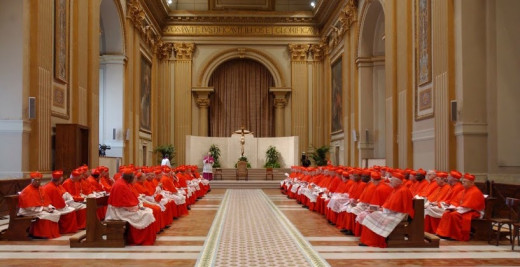
Things To Look For
Papal conclaves traditionally last only a few days; the longest one in the past 200 years has been five days. However, since Pope Benedict reverted back to the rule requiring a two-thirds majority plus one instead of a simple majority, this conclave could take longer.
Might the conclave turn to a younger man since Benedict’s decision seems to open the door to resignation as a possible option?
The United States will have a larger part in the process than ever before since almost ten percent of the Cardinal-electors are American. The odds of an American pope are unlikely.
The face of the Catholic Church has changed dramatically since World War II. Congregations in the West are smaller and older, while those in Latin America, Africa and parts of Asia are growing, bringing youth and energy to the Church. The last two popes have been non-Italians. Could the next one be non-European? Could the next pope be a person of color?
At the moment the Church is rife with scandal and how this plays out in the balloting possibly could affect the outcome. Already one cardinal-elector, Cardinal O’Brien from Scotland, has announced he will not be attending as he has been charged with inappropriate contact and behavior toward priests in the 1980s.
This is not something that will be known right away and possibly not at all if Benedict dies in the near future, but it will interesting to see what dynamic the retired pope brings to the Holy See. It has been so long since a pope has resigned that, for all intents and purposes, this is new ground.
Cardinal-Elector Demographics
- 28 are Italian
- 61 are European (24% of the world’s Catholics)
- 11 are African (16% of the world’s Catholics)
- 19 are Latin American (40% of the world’s Catholics)
- 14 are North American (16% of the world’s Catholics)
- 11 are Asian (11% of the World’s Catholics)
It is very likely the pressures of the 21st-century may be borne out in this papal election. While the Church and the problems inherent with the Church are obviously global, how the regional concerns are addressed in concave may very well decide the outcome. The cardinals from Latin America, Africa and Asia are very concerned about chronic poverty and trying to reconcile the Church’s position on birth control and condoms with the need to fight the crises of overpopulation and AIDS. European and North American cardinals have to be concerned with the cleric sex abuse cases and who might possibly be implicated in the future. There is also the problem of the Curia and Vatican Bank scandals which, for the most part, have touched European (mostly Italian) and North American cardinals and extend back to Roberto Calvi and beyond. All aspects of the Church are concerned with relations with the other religions, particularly Judaism and Islam.
We’ll know soon enough.
